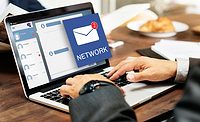Using Mass Notification to Stay in Touch with Remote Workers during Coronavirus

The impact of the coronavirus continues to change the way many organizations handle their day to day operations. One of the most jarring changes is a shift to remote work. To help reduce the spread of the disease, many organizations are mandating that their employees work from home.
However, one of the challenges with this dramatic shift is effective communication. People are being sent home without a good way for organization leaders to stay in touch. This can hurt productivity and overall employee engagement. While many organizations may default to sending out mass emails, solely relying on one form of communication is not always effective when trying to share critical information.
That’s why many organizations are turning to mass notification solutions to help share information. While mass notification is often used to share in-the-moment alerts about emergency situations, with the right solution, organizations can leverage it to easily deliver mass communications that include health and safety tips and operational updates related to the coronavirus. Utilizing the remote capabilities of a mass notification system can help organizations reach their people via multiple communication channels to ensure everyone receives a message and doesn’t get left in the dark about changes to regular procedures.
One of the most immediate ways organizations can reach people is via their mobile devices. Mass SMS text messages and push notifications sent to mobile apps can reach everyone in an organization. When people are not in the office or at their normal work facilities, their mobile device will likely be one of the devices they check most often for news and updates.
If an organization needs to abruptly shut down or extend the time it is requiring people to work from home, SMS text messages and push notifications can provide an immediate means of reaching everyone with clear, consistent messaging. This can help minimize confusion and the spread of rumors that might further disrupt an already chaotic situation.
Another mass notification delivery method to utilize is desktop notifications. Remote workers may have been sent home with work laptops that are connected to a mass notification system. Utilizing desktop pop-up alerts can help grab people’s attention by launching over other open applications. This helps ensure the message is being read by interrupting other ongoing activities that may prevent them from seeing a message when it comes in. The quicker someone can see a message and react to it, the better.
Scheduling these messages for daily delivery can help establish a mass notification system as the primary source for operational updates. Even if an organization does not have an update to share on a daily basis, using mass notifications to share best practices for good hygienic habits, or tips on how to maintain productivity while working from home can help keep employees engaged and prevent them from feeling overly isolated.
In some cases, these message delivery types can include the opportunity for the recipient to respond to the notification that has been sent out. Under normal circumstances this is often done to account for people who are safe and those that need assistance in the event of a crisis. However, during the coronavirus, it can be used to confirm that recipients have read the messages being sent out and to check in on worker wellbeing. When a message is sent out, it can ask for the recipient to reply that they have read the message.
This can help organization leaders determine if everyone is aware of new procedures and expectations, or if a follow-up message needs to be sent to those that did not respond. System administrators can also share common symptoms of the virus in a message and ask the recipient if they are experiencing any of those symptoms. Based on response, organizations can identify if there is a potential outbreak and if they need to warn other employees who worked in close proximity.
As the number of cases continues to grow and recommendations from the CDC and other government officials continue to evolve, it has become clear that the coronavirus will require ongoing management from organization leaders. Mass notification solutions that integrate with collaboration tools like Microsoft Teams and Cisco Webex Teams can offer a simple way to gather key stakeholders that can assess and determine next steps for how organizations will operate while impacted by the coronavirus.
Following the distribution of an alert, a mass notification system can automatically launch a new collaboration space for select team members to join and begin determining a response. For some mass notification systems, a similar functionality can also be accomplished by sending out invitations to join a conference call. This can be much less labor intensive and time-consuming than traditional calling trees or manual invitations.
These features can help organizations communicate with their people during the ongoing threat, but when it eventually passes, organizations can use mass notification help get operations back up and running quickly. Having an established method of communication helps recipients stay on the same page about when workplaces will reopen and what expectations are for returning to work.
Organizations not already leveraging a mass notification tool will get the added benefit of having a new safety tool in place when operations return to normal. Active shooter situations, severe weather, and other crisis events can all be managed with help from mass notification. Systems that offer on-premises alerting capabilities as well as mobile ones will help organizations ensure they reach everyone who needs to receive a message no matter where they are. Delivering mass notifications to IP phones, IP speakers, digital signage, desktop computers and mobile devices with audio, text and image alerts will ensure organizations have a complete solution for reaching all of their people.
While the overall impact of the coronavirus is still in question, organizations can mitigate the damage it may cause by using mass notification stay in contact with their employees to keep them informed about any changes or developments.
Looking for a reprint of this article?
From high-res PDFs to custom plaques, order your copy today!






